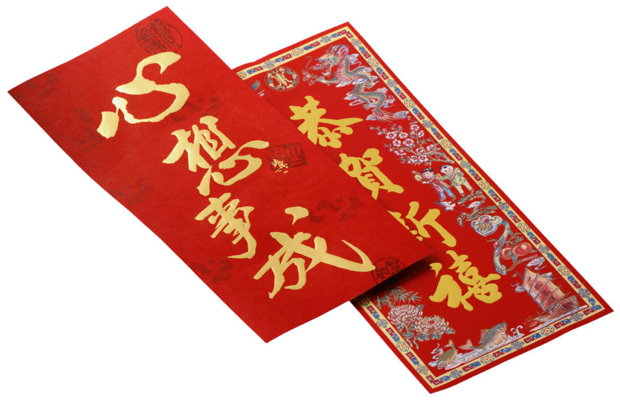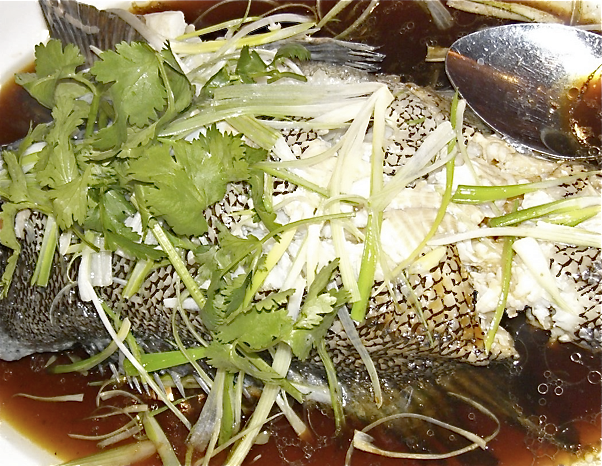In This, The Year of the Dragon, Consider Whole Steamed Fish
Chinese New Year is around the corner and cities throughout Asia, including Singapore where I live, are getting ready to ring in the Year of the Dragon. Historically, the dragon is the mightiest of signs in the Chinese horoscope and symbolizes power and excellence … traits that China has strived for throughout history. So, as you can imagine, 2012 will likely be a very important year for businesses, marriages and, of course, births.
Chinese New Year customs and traditions vary widely in countries and cities throughout the world. As a child growing up in a Cantonese family in San Francisco, my grandmother instilled the traditions of our ancestors by teaching us the importance of following generation-old customs. From cleaning our home and sweeping away any ill-fortune to gifting hong bao (little red envelopes) for good luck and, most importantly, filling our home with traditional snacks and preparing meals for friends and family with symbols of good fortune.
Every aspect of Chinese New Year is laden with symbolism, especially with the food served during this time of celebration. Everything, from the appearance to the name of a dish, has significance. Typical Chinese New Year meals in my family usually started with an appetizer of spring rolls and dumplings. Chosen carefully, since their appearance supposedly resembles a gold bar or bouillon, which symbolizes wealth. Our dining table always included the mandatory noodle dish to represent long life, followed by whole roasted poultry and fish to symbolize family togetherness.
Serving fish at a New Year dinner has become a family tradition and, throughout Chinese history, the fish is considered to be a lucky Chinese Year symbol that plays a large role during this festive time of year. The word fish, “Yu”, sounds like the word wish or abundance in Cantonese and Mandarin, so it’s customary in most Chinese families to serve fish at the end of every meal. As a child, I used to stuff myself on the dumplings and noodles leaving no room for the fish; but I’ve figured out through the years that the finale of whole steamed rock cod or striped bass was the best part – because everything really does taste better on the bone. My Grandmother never let us forget that serving fish with the head and tail intact promised a good beginning to the New Year and by leaving a bit uneaten symbolized the surplus for the next year.
For reasons of taste and good fortune, whenever I serve fish to my family and friends, I prefer steaming or roasting it whole. It may be too daunting for some, but if you do choose the whole fish route; look for clear eyes, red gills and fish that smells like the ocean. Gong Hei Fat Choi (Happy Chinese New Year) and sincere wishes of peace and happiness to you and your families!
Ginger-Soy Steamed Fish, China
A popular technique in Cantonese cooking, steaming is a delicious and healthy way of preparing fish and it keeps the meat flavorful and moist. I enjoy serving this simplistic dish family style with stir-fried greens and steamed rice.
Ingredients
1 1/2 -2 lbs whole sea bass or rock cod, scaled and gutted with head and tail intact … or 4 (6 oz) sea bass or halibut filets
1/4 cup green onions, white parts only, finely sliced on the bias
3 tablespoons cilantro leaves
2 tablespoons canola oil
Sauce
2 tablespoons fresh ginger, finely sliced into slivers
2 cloves garlic, minced
3 tablespoons canola oil
1 tablespoon light soy sauce
1 tablespoon dark soy sauce
1 teaspoon oyster sauce
1 teaspoon toasted sesame oil
1/2 teaspoon sugar
1/2 teaspoon cornstarch
1/8 teaspoon ground white pepper
Instructions
Place a steaming rack in a work or a deep pan and fill the pan with 2 inches of water. The water should be below the steaming rack. Bring the water to a boil over high heat.
Combine the ingredients for the sauce in a small bowl. If using whole fish, score the fish the times on each side of the fish and place the fish or filets on a plate suitable for steaming and large enough to hold the whole fish or filets in a single layer. Spoon the sauce evenly over the fish.
Place the plate of fish on the steaming rack, cover tightly and steam the fish over high heat for 7 to 10 minutes per inch thickness of fish. Carefully remove the plate from the steamer and transfer the filets to a warmed platter and spoon the sauce over the fish.
To serve, heat the remaining 2 tablespoons of oil in a small pan until near smoking. Place the green onions and cilantro on top of the fish and carefully drizzle the hot oil on top. Serve immediately.
Makes 4 servings








Love the blog